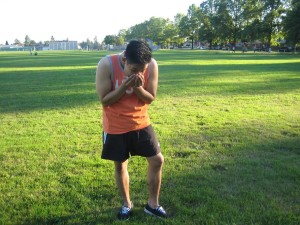Staphylococcus aureus is bacteria that are normally found on the skin. The methicillin-resistant staphylococcus is a strain that is highly resistant to various antibiotics that are traditionally used in treating staph infections.
It is important to note that MRSA is also infectious than the non-resistant staph, but the antibiotic treatment options are limited. Since staph and MRSA are present on the skin, they can be contagious. The bacteria is likely to be transferred to others via direct contact with the skin lesion, inhalation of MRSA droplets and introduction of the bacteria into the body and on the hands of healthcare workers in hospitals and nursing homes.
MRSA on the skin
Staphylococcus aureus and the strain that is resistant to antibiotics are present on the skin as well as in the nasal passages of some in the population. Individuals who came in direct physical contact with others occur several times in a day through daily gestures as well as sharing air space. The outcome of normal socializing will also allow the transfer of staph and MRSA from one individual to another.

Contact with MRSA bacteria
MRSA just like with other bacteria can be easily acquired by touching the skin of an infected individual or touching surfaces that have been in contact with an infected individual. It is important to cover open, draining or oozing wounds using bandage to minimize the risk of transmission to others. Proper hand washing is considered the most effective method of minimizing the transmission of bacteria and viruses.
Inhalation of MRSA bacteria
MRSA will find its way into the nasal, upper and lower respiratory passages. Once an infected individual sneezes or coughs, bacteria are propelled into the air by droplets and can travel up to 3-5 feet in the air and inhaled by others. It is important to cover the mouth and nose while the active symptoms of respiratory infection are present in order to help minimize the number of circulating bacteria in the air.
MRSA and sports
Just recently, attention is focused on MRSA infections among young children, especially those who engage in contact sports and playground activities. It is a known fact that the skin is the natural barrier to infection. Both staph and MRSA can thrive on the skin of even healthy individuals, thus the risk is increased once the integrity of the skin is broken.
Contact sports and activities in the playground increase the risk for cuts, abrasions and bruises, thus allowing bacteria to penetrate. It is vital to keep the skin clean before and after playing contact sports in order to reduce the number of bacteria that might enter into the body once the skin is broken. Proper wound care is vital and you can learn the appropriate steps to take if you will register for first aid training today.
Exposure of healthcare workers
MRSA carries the risk for transmission from one individual to another while under the care of healthcare workers who came in contact with infected individuals in hospitals and outpatient clinics. The prevention of transmitting MRSA is vital. Proper hand washing and strict monitoring of MRSA cases are vital in minimizing the spread of the disease.
